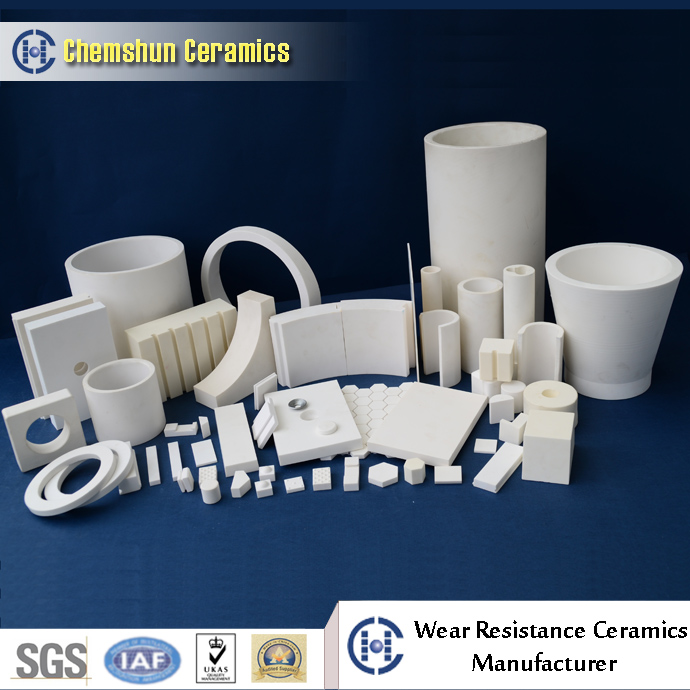The wear resistance of alumina ceramics stems from their unique physical and chemical properties: The Mohs hardness of alumina ceramics is 9, second only to diamond. Microscopically, the dense crystal structure composed of strong ionic bonds can effectively resist the invasion of wear particles. Studies show that its wear resistance can reach 266 times that of manganese steel and 171.5 times that of high-chromium cast iron. Moreover, alumina ceramics possess chemical and thermal stability. They can maintain structural integrity in acidic, alkaline and high-temperature environments and can be used in extreme working conditions.
Application scenarios of wear-resistant alumina ceramics:
1.Wear-resistant parts for mechanical equipment: conveying systems (such as screw conveyors, pneumatic conveying pipelines, etc.), pump and valve seals, mixer blades, bearings, ceramic cutting tools, etc. It can replace traditional metal materials and reduce equipment downtime for maintenance caused by wear and tear.
2. Mining and metallurgical industry: It is used in crushers, mineral processing equipment (such as inner linings of cyclones), grinding media for ball mills, inner linings of high-temperature kilns, etc. Resist the impact and wear of ores and slag, and extend the service life of equipment.
3. Lithium battery transportation: Alumina ceramic pipes are used in lithium battery transportation pipelines, which not only ensure the durability of the pipelines but also prevent pollution and save the cost of pipeline replacement.
4. Electronics and semiconductor industry: Integrated circuit boards, electronic packaging materials, high-voltage insulating parts, wear-resistant components in wafer processing equipment (such as robotic arms, fixtures), corrosion-resistant reaction chambers.
5. Chemical and petroleum industries: Inner linings of reaction vessels, chemical pumps and valves, pipelines, centrifuge components, wear-resistant rings for drilling equipment. Mud pump bushings and inner linings of oil pipelines.
The high wear resistance of alumina ceramics is its core competitiveness in the industrial field. And through material compounding, process innovation and application expansion, its potential is still being continuously released. In the future, the industry needs to enhance the toughness of materials and reduce costs while targeting the demands of the high-end market, promoting a transformation from “quantity” to “quality”, and providing better solutions for emerging fields such as intelligent manufacturing and green energy.
Post time: May-15-2025


